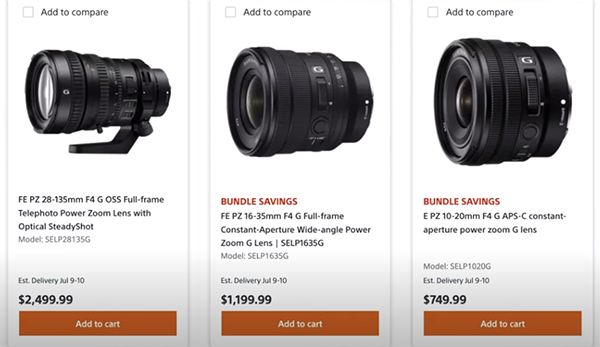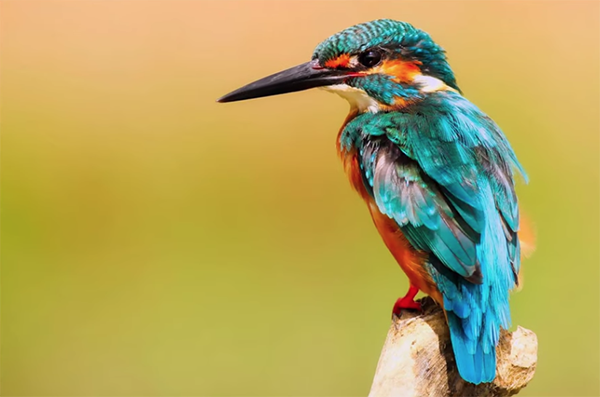These Amazon bedding organisers transformed how I store bed sheets – my home has never looked tidier
TikTok made me buy it, and I am so glad I did
Is your smartphone a camera of last resort when you’ve left your photo gear at home, or do you have higher aspirations for mobile photography? In either case, you’ll be able to significantly improve your mobile imagery by taking advantage of four helpful tips in the four-minute tutorial below.
Instructor Vlad Manea is a working pro based in Germany who frequently shares shooting and editing tips that are designed with the beginner’s point of view in mind. Today’s quick episode follows this approach with a quartet of tips for making impressive photographs (rather than mere snapshots) the next time you rely upon your phone. So pull it out of your pocket now and follow along.
We’ll admit that modern phones are capable of capturing impressive images when used like an auto-everything point-and-shoot camera. The goal of this lesson, however, is to encourage the use of camera centric smartphone features that you’ve ignored until now. These techniques will feel familiar because they mimic some of what you already do with your “real” camera.
This advice pertains to just about any brand of phone you own (once you switch out of Auto), and Manea begins by demonstrating how to use the helpful Exposure slider to get the light right. Simply swipe in either direction to brighten or darken the scene before capturing the shot. Depending upon your phone, you’ll move the slider up and down or side to side.

Manea’s second suggestion is a blunt one: “Just don’t use the flash.” He explains that he never uses the tiny light on his phone because it creates harsh shadows and very unnatural tones. Or as he puts it, ‘the flash is the surest way to ruin your phone photos completely.” And he has a few suggestions for what to do instead.
Tip #3 is what Manea considers the most important of the four, and it’s all about thoughtful and compelling composition. He prefaces his advice like this: “You can be in the most beautiful place on earth, but if you don’t know how to compose a shot it’s likely that you’ll end up with a bad photo.” He then discusses a handful of techniques for optimum framing when shooting with a phone.
There’s still one more helpful suggestion to go, covered in the last minute of the video, so stick around until the end. Put it all together and you’ll realize that your phone IS a real camera after all.
Then head over to Manea’s popular YouTube channel where there’s much more to learn about the basics of photography with all types of gear.
The world of photography offers a wide array of camera systems, each designed to cater to different needs and budgets. And one of the key considerations is choosing a model with a sensor size that works best for your style of photography.
Some photographers are under a misconception that bigger sensors and full-frame cameras are always the optimum choice, but this tutorial from instructor Jalen Oban will likely change your mind. In barely six minutes he discusses the pros and cons of full-frame, crop-sensor, and medium format cameras so you can choose what you really need versus what you want.
Oban is a landscape photographer and a very popular educator based in the Pacific Northwest. He kicks off this episode with the benefits and disadvantages of full-frame cameras that are all the rage today. As he says, “these sensors excel at delivering superior image quality, better dynamic range, and lower noise levels at higher ISO’s compared to their smaller counterparts.”

Along with these and other benefits, however, are several pitfalls to keep in mind. First, these cameras and compatible lenses tend to be more expensive. Moreover, they’re typically larger and heavier than crop senor models, and this can be a drawback when carrying a system for a full day in the field. Storage capacity and the impact on computer speed is also a concern because of the larger files sizes that full-frame cameras create.
Crop-sensor models are usually referred to as APS-C cameras. As Oban explains, “their sensors are smaller than full-frame sensors, meaning that the image you capture at the same focal length will essentially appear zoomed in by 1.5 X (or by 2X when using a micro-four-thirds camera).” These systems are generally more affordable than full-frame, as well as being smaller and lighter than their big brothers.
The crop factor of these models also means that any given lens will have more reach on the long end, while reducing the advantages of wide focal lengths. In other words, they provide greater versatility when shooting wildlife and other distant subjects, but they can be less effective for capturing landscapes with expansive vistas.
Oban wraps up the tutorial with a look at medium-format cameras as compared to full-frame and crop-sensor options. He also provides practical examples of how all three perform with regard to different genres of photography. This way your next purchasing decision won’t be an emotional one.

We also encourage you to watch a tutorial we featured last week from another pro who demystifies camera metering modes so you can make the best choice for shooting under various conditions.
